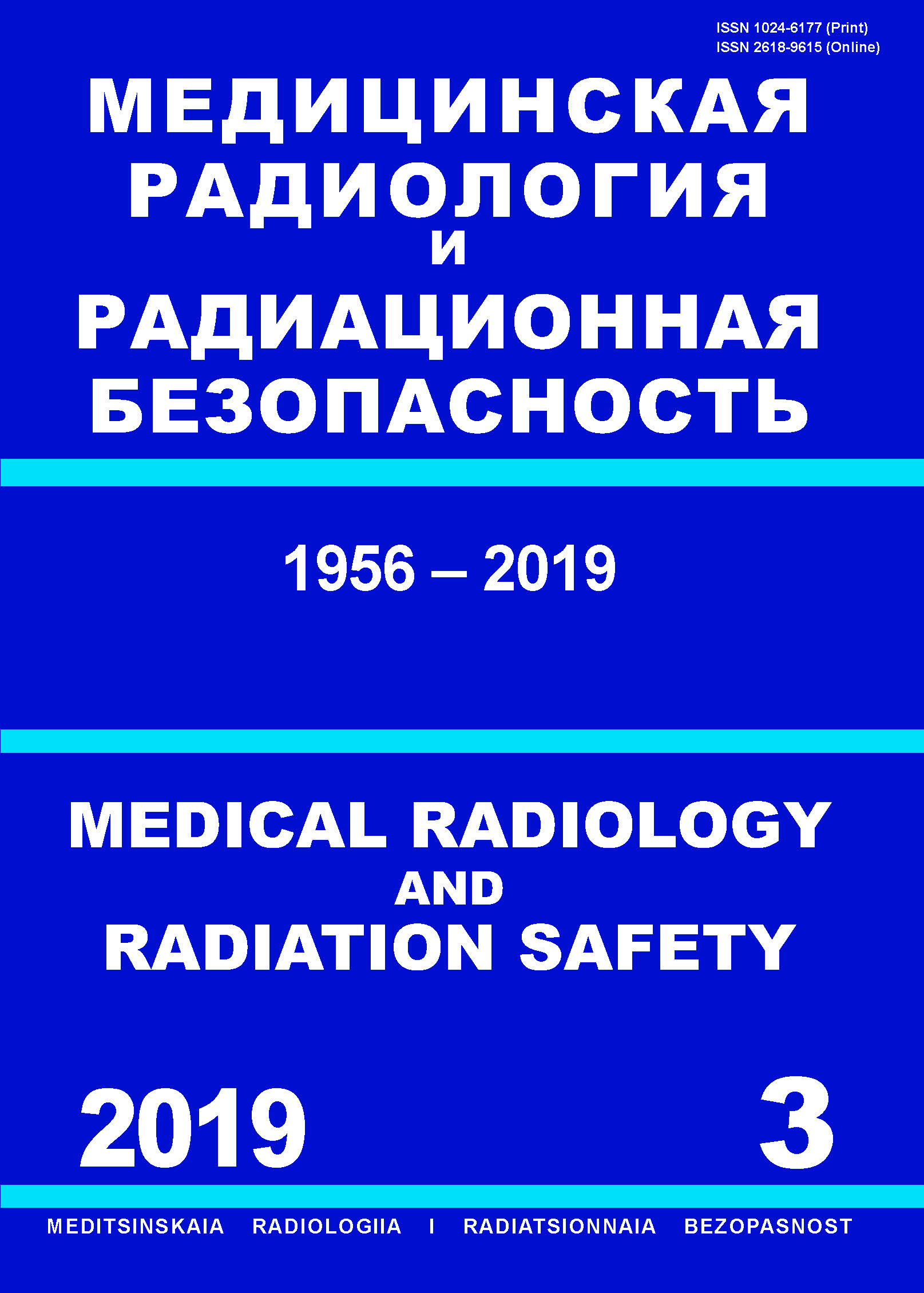A.I. Burnasyan Federal Medical Biophysical Center (FMBC) FMBA (Leading Researcher)
Russian Federation
Russian Federation
CSCSTI 76.03
CSCSTI 76.33
Russian Classification of Professions by Education 14.04.02
Russian Classification of Professions by Education 31.06.2001
Russian Classification of Professions by Education 31.08.08
Russian Classification of Professions by Education 32.08.12
Russian Library and Bibliographic Classification 51
Russian Library and Bibliographic Classification 534
Russian Trade and Bibliographic Classification 5708
Russian Trade and Bibliographic Classification 5712
Russian Trade and Bibliographic Classification 5734
Russian Trade and Bibliographic Classification 6212
Purpose: Research of the relationships between spatial distributions in water of the main dosimetric values, namely the absorbed dose, kerma and ionization kerma, for small-size fields with a circular cross section created by divergent beams of bremsstrahlung spectrum with a maximum energy of 6 MeV. Material and methods: Using the Monte-Carlo method with the codes EGSnrc and MCNP4C2, calculations were carried out for these distributions in a water phantom for beam radii on the phantom surface from 0.1 to 3.0 cm and for depths up to 40 cm. The ratio at depths up to 5 cm, where there is a so-called build-up area, is studied in particular detail. Results: The results of calculations show that the ratio of ionization kerma to kerma for such beams at depths up to 40 cm is practically constant and equal to 0.9930 ± 0.0005. The ratio of the absorbed dose to the ionization kerma, in contrast to conventional square beams with a cross-sectional area 20 cm2, is much less than unity at radii of 1 cm at all the depths considered. Conclusion: The data obtained show that the relationship between absorbed dose, kerma and ionization kerma for photon fields produced by beams of small cross sections is very different from that for traditional beams. This circumstance should be taken into account when conducting dosimetry of small fields.
clinical dosimetry, dose, kerma, ionization kerma, small fields
1. Loevinger R. A formalism for calculation of absorbed dose to a medium from photon and electron beams. Med Phys. 1981;8:1-12.
2. Attix FH. Introduction to Radiological Physics and Radiation Dosimetry. New York: Wiley. 1986.
3. Hannallah D, Zhu TC, Bjarngard DE. Electron disequilibrium in high-energy x-ray beams. Med Phys. 1996;23:1867-71.
4. Klimanov VA. Radiobiological and dosimetric planning of radiotherapy and radionuclide therapy. Moscow: Izd. NNIU MEPhI. 2011.
5. Kumar S, Deshpande DD, Nahum AE. Monte-Carlo-derived insights into dose-kerma-collision kerma inter-relationships for 50 keV-25 MeV photon beams in water, aluminum and copper. Phys Med Biol. 2015;60:501-19.
6. Sheikh-Bagheria D, Roger DWO. Monte Carlo calculation of nine megavoltage photon beam spectra using the BEAM code. Med Phys. 2002;29(3):391-402.
7. Rogers DWO, Kawrakow I, Seuntjens JP, et al. National Research Council of Canada Report No. PIRS-702 (rev C) NRC Usercodes for EGSnrc (Ottawa: NRCC). 2011.
8. MCNP-A General Monte Carlo N-Particle Transport Code. Version 4C, Ed. by JF Briesmeister (Los Alamos National Laboratory). 2000.





